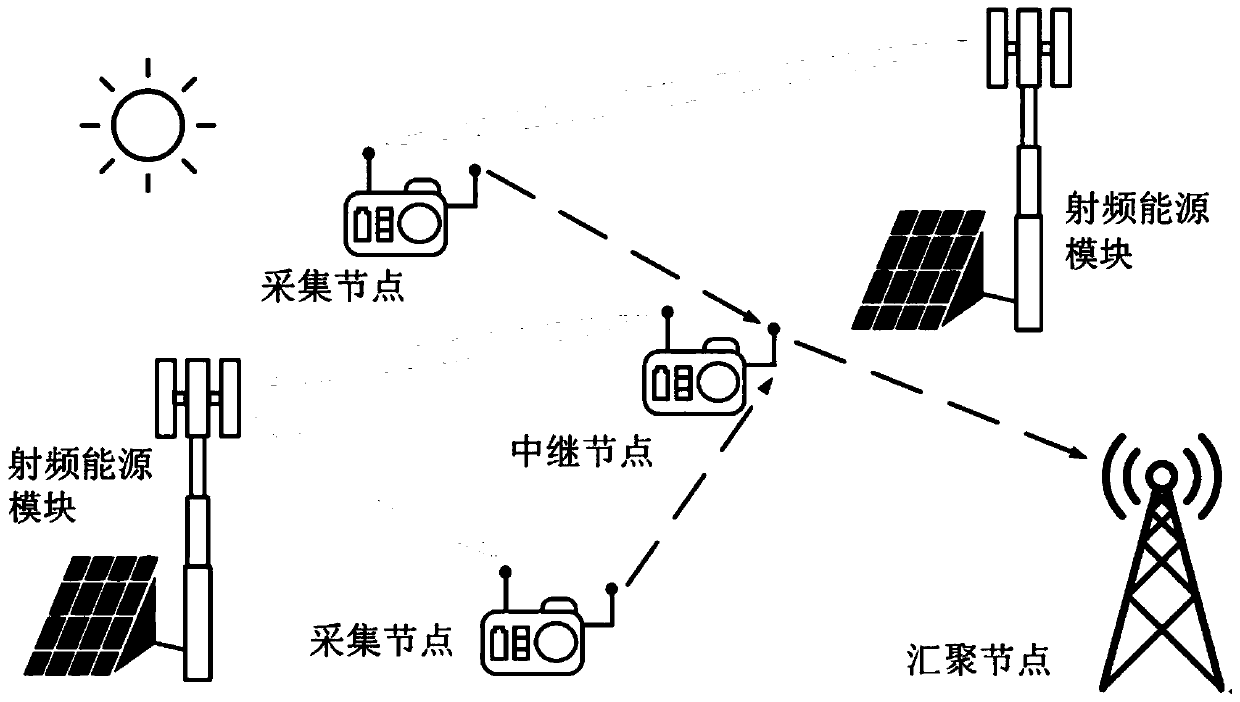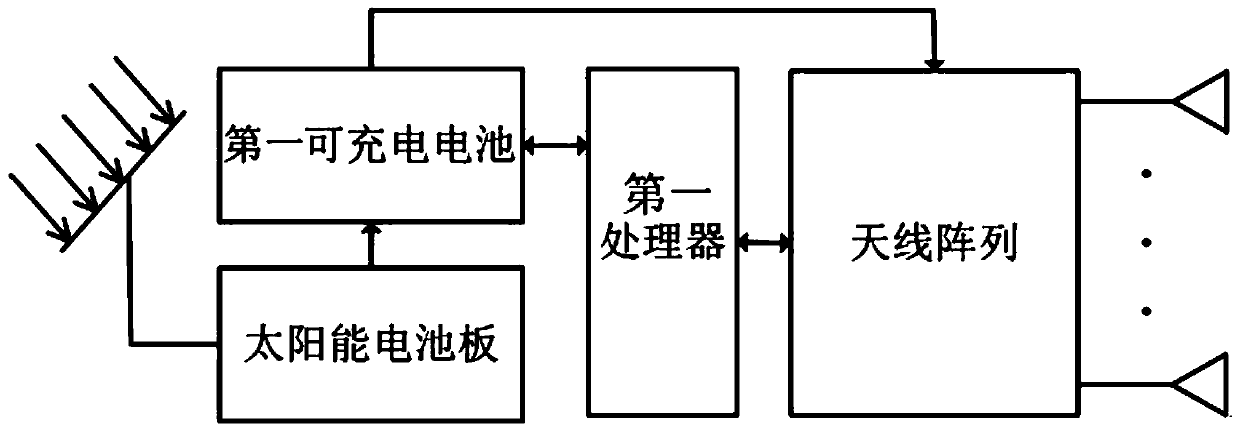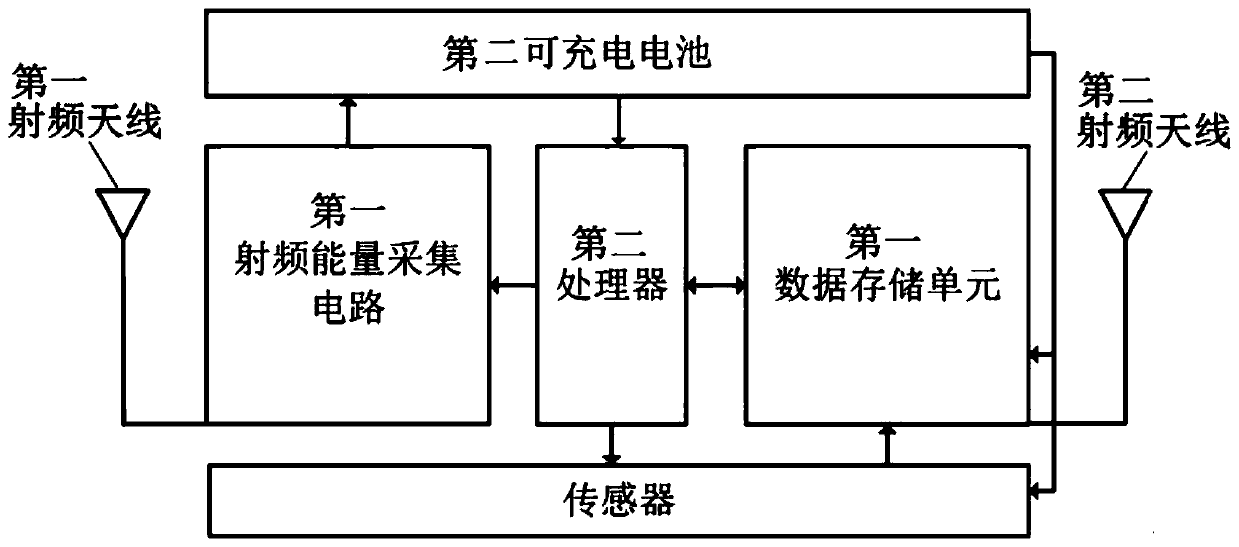Monitoring system for large-scale rechargeable Internet of things, and distributed protocol
A monitoring system and Internet of Things technology, applied in transmission systems, current collectors, electric vehicles, etc., can solve problems such as reducing the accuracy of charging decisions, ignoring, and limiting the network scale, coverage, and deployment environment of the Internet of Things, so as to improve energy efficiency. Utilization efficiency, reduction of energy transmission attenuation, and large-scale network effects
- Summary
- Abstract
- Description
- Claims
- Application Information
AI Technical Summary
Problems solved by technology
Method used
Image
Examples
Embodiment
[0057] This embodiment discloses a monitoring system for large-scale rechargeable Internet of Things, such as figure 1 As shown, including IoT nodes and multiple RF energy modules.
[0058] In this embodiment, the network environment parameters of the monitoring system are: the network working time is 100 time slots, the channel state of each time slot is constant, the channel state changes between time slots, and the path loss parameter and its standard deviation are respectively 2.5 and 8dB. The channel bandwidth is 200kHz and the noise power is -95dBm / Hz.
[0059] Among them, the Internet of Things nodes include collection nodes, relay nodes, and sink nodes for collecting environmental data. , and transmit node data to the sink node according to its own data sending probability.
[0060] Each radio frequency energy module is used to collect energy, and based on the energy transmission power, transmits corresponding energy to surrounding collection nodes and relay nodes t...
PUM
 Login to View More
Login to View More Abstract
Description
Claims
Application Information
 Login to View More
Login to View More - R&D
- Intellectual Property
- Life Sciences
- Materials
- Tech Scout
- Unparalleled Data Quality
- Higher Quality Content
- 60% Fewer Hallucinations
Browse by: Latest US Patents, China's latest patents, Technical Efficacy Thesaurus, Application Domain, Technology Topic, Popular Technical Reports.
© 2025 PatSnap. All rights reserved.Legal|Privacy policy|Modern Slavery Act Transparency Statement|Sitemap|About US| Contact US: help@patsnap.com



